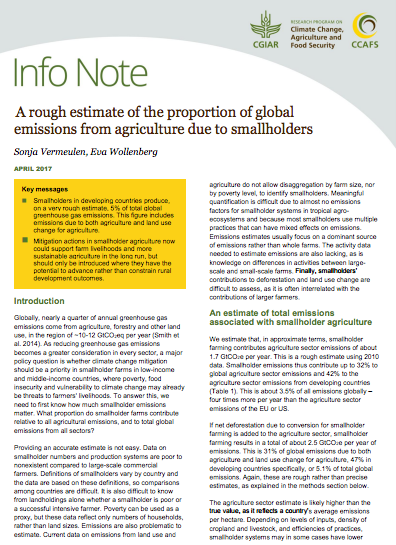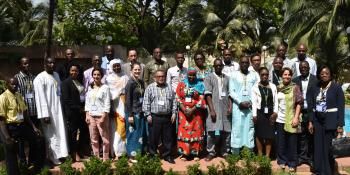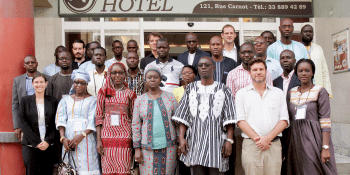Emissions from smallholder farming may be significant; mitigation recommendations

Report examines emissions from smallholder farming and if smallholder farming should contribute to climate change mitigation.
As countries plan and begin implementation of Nationally Determined Contributions to reduce greenhouse gas emissions, a global debate centers on how much climate change mitigation should come from smallholder farms in low-income and middle-income countries. Sonja Vermeulen and Lini Wollenberg, lead researchers from the CGIAR Research Program on Climate Change, Agriculture and Food Security (CCAFS) inform the debate in “A rough estimate of the proportion of global emissions from agriculture due to smallholders,” a CCAFS Info Note published this month.
First, researchers assessed whether smallholder farmers cause enough emissions to be considered significant emitters on a global scale. Using FAOSTAT estimates of emissions from agricultural practices and national data on the proportion of agricultural land under smallholder farming, researchers found that smallholder farmers are responsible for roughly 5% of all emissions globally, including 32% of emissions from the agriculture sector and 29% of emissions from agriculture-driven land-use change.
Vermeulen and Wollenberg recognize that the coarseness of the data and vastly varying contexts - their methods are fully described in the Info Note. In extracting data and making these estimates, they also uncovered some important trends:
a. Smallholder farming emissions in the agriculture sector are concentrated in Asia, mostly due to large populations, though Ethiopia and Tanzania also have high emissions.
b. While absolute emissions are highest in Asia, emissions per smallholder farm are not necessarily higher in Asia.
c. In the top 20 emitting developing countries, smallholder farming accounts for 0.8 GtCO2e per year. This is 42% of all agriculture-driven emissions associated with deforestation in those 20 countries. However, this proportion is expected to decrease.
Researchers then examined differences in emissions between smallholder farming and larger or industrial farming. They found significant variations in emissions according to practices and location, for example in how much nitrogen fertilizer is used; in upland v. irrigated rice production; and in choices made around herd management, feed quality, breed and animal health in the livestock sector. They also found that productivity and emission intensity (emissions per unit of output) - important factors for food security, livelihood and mitigation strategies - vary widely.
Vermeulen and Wollenberg inform the global debate on the role of smallholder farming in climate change mitigation with evidence-based key messages for low emissions development:
- Early adoption of low-emissions agriculture in developing countries is an opportunity for more efficient use of land, fertilizer, energy, feed and water.
- Some low emissions practices may provide immediate economic benefits for smallholders, such as saving money through more efficient application of nitrogen fertilizers in high-use contexts and reduced irrigation in rice paddies.
- Shifting to new practices may create higher risks and costs for smallholders, who are disproportionately poor, at risk from food insecurity and vulnerable to climate change.
- Carbon sequestration is impermanent and reversible, and smallholders may be blamed or punished for deforesting or cultivating soils during times of hardship.
- Substantial funding may be needed to adopt new technologies, given diverse and dispersed smallholders and costs of monitoring.
When considering the issues of poverty, food insecurity and vulnerability to climate change, the researchers conclude that smallholder farmers in developing countries should contribute to mitigation, but only when it also supports livelihood improvements and other rural development outcomes.
Any decision to seek climate change mitigation in smallholder systems needs to make sense for both mitigation and development." (Vermeulen and Wollenberg 2017)
Information and resources for policy-makers working at the nexus of climate change, agriculture and food security are growing. CCAFS publications and tools are widely available, including the Mitigation Options Tool (CCAFS-MOT) or the Climate-Smart Agriculture Programming and Indicator Tool. For more information, please contact Julianna White.
Download the info note: Vermeulen S, Wollenberg E. 2017. A rough estimate of the proportion of global emissions from agriculture due to smallholders. CCAFS Info Note. Copenhagen, Denmark: CGIAR Research Programme on Climate Change, Agriculture and Food Security.
Julianna White is the program manger for CCAFS low emissions development research.




